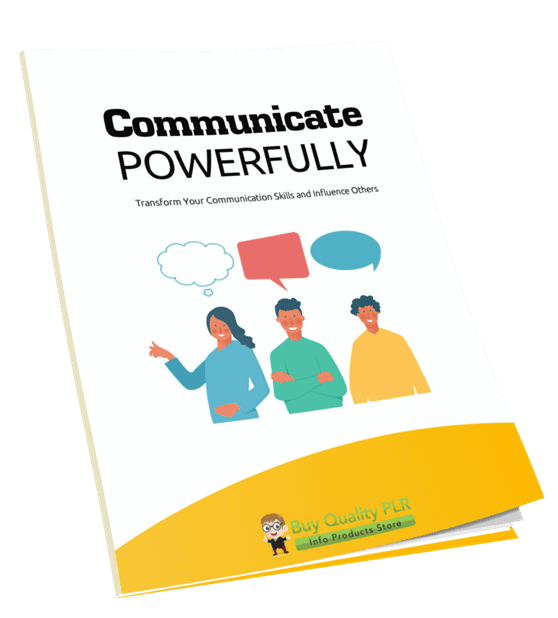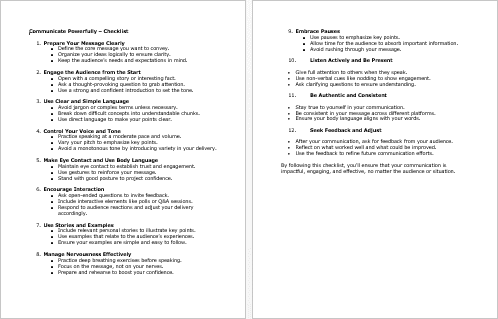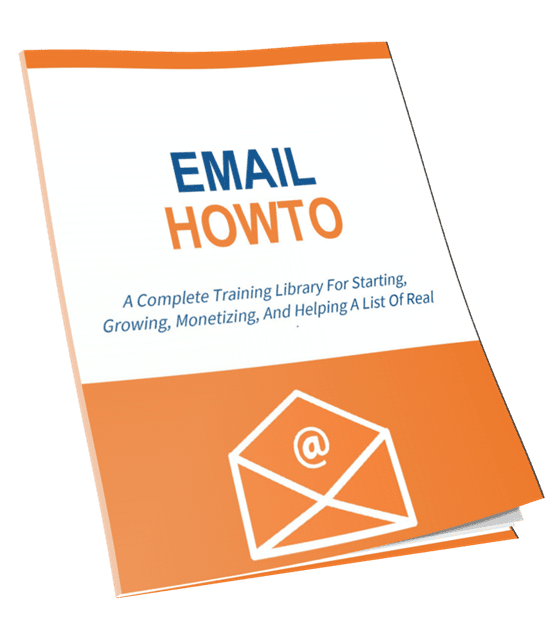
Communicate Powerfully PLR Course 31k Words
in Communication PLR , Confidence PLR , Confidence PLR Ebooks , Courage PLR , PLR Checklists , PLR eBooks , PLR eCourses , PLR List Building Reports , Premium PLR Articles , Premium PLR eBooks , Premium PLR Reports , Premium White Label Brandable PLR Coaching Courses , Private Label Rights Products , Self Improvement PLRChoose Your Desired Option(s)
has been added to your cart!
have been added to your cart!
#communicatepowerfully #plrcourse #communicationskills #confidenceboost #powerfulspeaking #speakwithimpact #publicspeakingtips #effectivecommunication #selfimprovement
Communicate Powerfully PLR Course: Unlock the Secrets to Effective Communication
Transform Your Communication Skills and Influence Others with Confidence and Impact
Course Title: Communicate Powerfully
Word Count: 29,226 words
Course Type: PLR Course
Course Overview
Welcome to the Communicate Powerfully course! Whether you’re looking to improve your everyday interactions, connect more deeply with your audience, or become a more persuasive speaker, this course will help you unlock your communication potential.
In this course, you will gain valuable tools to elevate your speaking, listening, and presentation skills. From mastering active listening to speaking with confidence and influence, this course covers all aspects of communication. By the end of the course, you will be equipped to communicate with clarity, authority, and impact in any situation.
Presenting…
Communicate Powerfully PLR Course 31k Words
What’s Included in the Course Package?
The Communicate Powerfully course is divided into five comprehensive modules, each packed with expert strategies and practical steps to enhance your communication. Here’s a breakdown of the course content:
Module 1: Laying the Foundation for Powerful Communication
This module sets the stage by helping you understand your communication style and audience, while building the trust and credibility needed for impactful communication.
- Step 1: Understand Your Communication Style – Discover your unique style and learn how to leverage it for effective communication.
- Step 2: Know Your Audience – Tailor your messages to different audiences and ensure that they resonate with your listeners.
- Step 3: Clarify Your Purpose – Establish the purpose of your communication, whether to inform, persuade, or inspire.
- Step 4: Build Trust and Credibility – Learn techniques to build trust and establish your credibility, making your message more influential.
Module 2: Mastering the Art of Active Listening
Good communication is a two-way street. Learn how to listen effectively to foster deeper connections and improve your message delivery.
- Step 1: Give Full Attention – Master the art of undivided attention to ensure effective listening.
- Step 2: Use Body Language to Show Engagement – Utilize non-verbal cues to express active engagement and reinforce your listening efforts.
- Step 3: Ask Clarifying Questions – Encourage deeper conversations with thoughtful questions.
- Step 4: Reflect and Summarize – Ensure understanding by reflecting on key points and summarizing them to solidify your communication.
Module 3: Crafting Clear and Concise Messages
This module teaches you how to deliver your message effectively by focusing on clarity and simplicity.
- Step 1: Get to the Point Quickly – Learn how to grab attention right away and deliver the core message without unnecessary details.
- Step 2: Avoid Overloading with Information – Understand the importance of simplicity and how to convey your message without overwhelming your audience.
- Step 3: Use Simple and Accessible Language – Learn how to communicate in a way that’s easy to understand for everyone.
- Step 4: Use Examples to Illustrate Your Message – Strengthen your message with concrete examples and stories that make your points relatable.
Module 4: Speaking with Confidence and Presence
Confidence is key to powerful communication. This module focuses on voice control, posture, and reducing nervousness.
- Step 1: Practice Your Voice Control – Master your pacing, tone, and volume to make your speech more engaging and effective.
- Step 2: Maintain Good Posture – Learn how your body language affects your communication and how to use posture to exude confidence.
- Step 3: Control Nervousness with Breathing – Discover techniques to calm nerves and improve focus before speaking.
- Step 4: Embrace Pauses – Use pauses strategically to emphasize key points and create a powerful impact.
Module 5: Engaging and Influencing Your Audience
Now that you’ve built the foundation, it’s time to learn how to influence and engage your audience for maximum effect.
- Step 1: Tell a Compelling Story – Use storytelling to capture your audience’s attention and forge an emotional connection.
- Step 2: Use Persuasive Language – Discover persuasive techniques that encourage action and agreement from your audience.
- Step 3: Connect Emotionally – Learn how to connect with your audience on an emotional level to make your message unforgettable.
- Step 4: Invite Interaction – Encourage feedback and dialogue to keep your audience engaged and foster dynamic communication.
Additional Materials Included:
- Communicate Powerfully – Checklist (390 words)
A simple, easy-to-use checklist that summarizes the key takeaways from each module, providing quick reference points for enhancing communication skills. - Communicate Powerfully – FAQs (1,098 words)
A comprehensive FAQ section to address common concerns about improving communication, offering solutions and advice for overcoming communication challenges. - Communicate Powerfully – Salespage (879 words)
A professionally written sales page that you can easily customize and use to sell the course. It’s designed to engage visitors and encourage conversions.
How to Use and Profit from the Course
The Communicate Powerfully PLR Course provides an excellent opportunity to monetize your knowledge and expertise in communication. Here are several ways you can profit from this high-quality content:
- Sell the Course as a Digital Product
Package the course and sell it as a standalone product through your website, online platforms, or marketplaces. - Create a Membership Site or Subscription Model
Use the course as the foundation for a subscription-based platform or membership site. Offer ongoing communication tips, coaching sessions, or community support. - Offer Coaching or Consulting Services
Use the course content to build your own coaching or consulting practice. Offer personalized advice to clients looking to improve their communication skills. - Repurpose the Content into Smaller Products
Break the course into smaller, bite-sized modules, reports, or articles. You can sell each section individually or as part of a larger bundle. - Create Video or Audio Versions of the Course
Convert the content into videos or audios, adding an additional revenue stream through online courses or podcast platforms. - Use the Content for Workshops or Webinars
Host live workshops or webinars to teach the principles of powerful communication. Charge attendees for access or use the webinars as lead generation tools. - Convert into Physical Products
Create printed guides, workbooks, or books to sell in bookstores or online, allowing you to reach a wider audience and profit from tangible products. - Leverage Affiliate Marketing
Promote relevant affiliate products (such as communication tools, speaking equipment, or books) within the course content to earn affiliate commissions. - Use the Content for Lead Generation
Excerpt portions of the course for free to build an email list. Offer additional paid products or services once you’ve attracted and nurtured leads.
Licensing and Usage Terms
The Communicate Powerfully PLR Course includes a commercial license, allowing you to:
- Sell the content as-is or make minor tweaks to make it unique.
- Break the content into smaller reports and sell them individually.
- Bundle the content with other products to create larger offerings.
- Create a membership site, or sell it as part of a subscription model.
- Convert it into videos, audios, or physical products for additional revenue.
However, the following restrictions apply:
- You may not pass the PLR rights to your customers.
- You cannot offer 100% commissions to affiliates selling this product.
- You cannot give away the complete materials for free.
- You cannot add this content to packages that have already been purchased without additional purchases.
Start Communicating with Confidence Today!
The Communicate Powerfully PLR Course is your gateway to improving your communication skills and helping others do the same. With this comprehensive course, you’ll be able to share your knowledge and expertise with a wide audience, all while building a profitable business. Whether you’re selling the course, offering coaching, or creating workshops, this course is packed with value and designed for success.
Get started today and watch your communication skills (and your business) soar!
has been added to your cart!
have been added to your cart!
Here A Sample of Communicate Powerfully PLR Course
Welcome to Communicate Powerfully, a training course designed to help you elevate your communication skills to a whole new level. Whether you’re speaking to a small group or addressing a large audience, this course will guide you step-by-step on how to make your communication more impactful, confident, and memorable. Let’s dive in!
Module 1: Laying the Foundation for Powerful Communication
Step 1: Understand Your Communication Style
Introduction
As an international course creator, one of the most powerful tools in your toolkit is your ability to communicate effectively. Whether you’re creating content, leading a webinar, or engaging with your audience through emails, understanding your communication style can significantly enhance your ability to connect, engage, and influence others. The first step in developing your communication skills is to identify your unique style and recognize how it impacts your interactions.
Communication styles vary widely, and there’s no single “right” way to communicate. Some individuals are more direct and to the point, while others may prefer a more expressive, engaging approach. Some are reserved and thoughtful, and others are more extroverted, engaging easily with large groups. Understanding where you fall within these styles will not only help you leverage your natural strengths but also guide you in areas where you can improve.
Let’s explore this step-by-step approach to identifying and understanding your communication style.
1.1: Recognize the Four Primary Communication Styles
To begin identifying your communication style, it’s important to familiarize yourself with the four most common communication types. These categories help provide clarity on where you might fit and where there may be areas for growth.
- Direct Communication
Direct communicators get straight to the point. They focus on clarity, precision, and efficiency in their messages, and they prefer brevity over elaboration. This style is particularly effective in business contexts, where time is limited, and quick decision-making is important. Direct communicators tend to value honesty and straightforwardness, sometimes at the expense of sensitivity to others’ feelings.
Key Traits:
- Clear and concise messages
- Fast-paced communication style
- Often focused on results and actions
- May seem blunt or too forthright at times
- Expressive Communication
Expressive communicators are known for being lively, enthusiastic, and emotionally engaging. They tend to be story-tellers and enjoy sharing their personal experiences. This style is often found in environments where creativity, motivation, and emotional engagement are important, such as in training or teaching. Expressive communicators are skilled at capturing attention and making interactions more dynamic.
Key Traits:
- Use of personal stories and vivid language
- Enthusiastic tone and animated gestures
- Often open to exploring new ideas and possibilities
- Can sometimes come across as overly dramatic
- Reserved Communication
Reserved communicators are typically more thoughtful and measured in their approach. They value reflection and careful consideration before speaking. In professional settings, reserved communicators are often seen as diplomatic and strategic, taking time to weigh options before making decisions. This style works well when the conversation requires careful analysis, planning, or sensitive discussions.
Key Traits:
- Thoughtful, slow-paced communication
- Focus on listening before speaking
- Uses fewer but more impactful words
- May seem distant or aloof at times
- Responsive Communication
Responsive communicators are adaptable and can shift between the other three styles depending on the context. They are highly aware of their audience’s needs and adjust their communication to ensure the message is understood. Responsive communicators often excel in negotiation or conflict resolution because they are able to accommodate different perspectives without losing sight of their own objectives.
Key Traits:
- Highly adaptable to different communication styles
- Sensitive to the needs of others
- Skilled at navigating complex or sensitive conversations
- May struggle with decisiveness in high-pressure situations
1.2: Self-Assessment of Your Communication Style
Now that you are familiar with the four primary communication styles, it’s time to reflect on your own behavior. Understanding your natural tendencies is crucial for improving your communication effectiveness. Here’s how you can assess your communication style:
- Observe Your Behavior in Different Settings
Take a moment to reflect on how you communicate in different settings. How do you interact with colleagues, clients, or students? Do you find yourself speaking quickly and directly in meetings, or do you prefer to elaborate and share your thoughts in more detail? Pay attention to how you react in both formal and informal settings. - Evaluate Your Written Communication
Your written communication provides important clues about your style. Review some of your recent emails, course content, or messages. Do you tend to write in short, direct sentences, or do you elaborate with more descriptive language? Are you more formal, or do you use a conversational tone? This reflection will help you identify whether you lean towards a direct, expressive, or reserved style in writing. - Ask for Feedback
Sometimes it’s difficult to identify our own communication style, so don’t hesitate to ask for feedback from colleagues or peers. Consider asking a trusted colleague, mentor, or even your students to provide insight into your communication approach. This external perspective can help you gain a clearer understanding of how others perceive your style. - Take an Online Assessment
There are many online tools and quizzes designed to help you identify your communication style. Some of these tools can provide additional guidance and reveal specific nuances in your behavior. Consider taking one of these assessments and use the results to better understand how you communicate.
1.3: Understand the Impact of Your Communication Style on Others
Once you’ve identified your style, it’s important to reflect on how it affects others. Effective communication isn’t just about how you express yourself—it’s also about how your message is received. Understanding the potential impact of your communication style on others can help you adjust your approach to suit different situations.
- Direct Communication
While your approach may be clear and efficient, it may sometimes be perceived as abrasive or too blunt, especially in cultures where indirect communication is valued. If you often communicate directly, try to gauge the mood and communication preferences of your audience and adjust accordingly. - Expressive Communication
Your enthusiasm and energy can be a great asset, but it may sometimes overwhelm others, especially those who prefer more reserved communication. Be mindful of how your energy level affects those around you, and consider toning it down in situations where a more calm, collected approach is needed. - Reserved Communication
While your thoughtful approach allows you to speak with precision, others may perceive you as disinterested or unapproachable. If you tend to be reserved, work on showing more openness through small gestures like nodding in agreement or offering verbal affirmations to indicate that you are engaged. - Responsive Communication
Your adaptability is a strength, but it can also make you seem indecisive or inconsistent. If you tend to adjust your style based on others, make sure that you are not losing your own voice in the process. Find the balance between being flexible and staying true to your personal communication preferences.
1.4: Strengthen Your Communication Style
Now that you’ve identified your style and its potential impact, the next step is to refine and strengthen your communication abilities. Here’s how:
- Leverage Your Strengths
Once you understand your communication style, capitalize on your natural strengths. For example, if you are an expressive communicator, continue to engage your audience with stories and vivid language. If you are a direct communicator, use that ability to clarify complex concepts quickly and efficiently. - Develop Areas for Improvement
Every communication style has its areas for growth. For example, if you’re a direct communicator, you might want to work on being more sensitive to the emotional needs of your audience. If you’re more reserved, try to practice expressing yourself more openly and engaging with others on a deeper level. - Practice Adaptability
Especially in an international context, the ability to adjust your communication style based on the audience is essential. Cultivate the skill of switching between different styles when necessary. For example, in a formal business setting, you may need to adopt a more direct style, while in a creative brainstorming session, an expressive approach might be more effective. - Continue Learning
Effective communication is an ongoing learning process. Attend workshops, read books on communication, and engage with other course creators to constantly refine your skills. By staying open to feedback and continuously improving, you can enhance your ability to communicate powerfully across cultures and settings.
Conclusion
Understanding your communication style is the first crucial step in becoming a more effective and powerful communicator. As an international course creator, being aware of your style and how it impacts your audience will allow you to connect more meaningfully and deliver your message in the most effective way possible. Remember, it’s not just about how you speak—it’s about how your message is received and the connection you build with your audience. Keep refining your style and adapting to different contexts, and you’ll soon see the impact of your powerful communication.
Step 2: Know Your Audience
Introduction
Effective communication is not just about what you say; it’s also about who you say it to. As an international course creator, understanding your audience is vital to ensuring that your message lands with clarity and impact. Whether you’re engaging with colleagues, clients, students, or peers, tailoring your communication style and message to fit your audience will ensure that your words are received in the right context, fostering stronger connections and promoting mutual understanding.
In this step, we’ll explore how knowing your audience can help you become a more strategic and impactful communicator. By understanding their needs, preferences, and cultural nuances, you’ll be able to adapt your message to suit them, increasing the likelihood of your ideas being understood, accepted, and acted upon.
Let’s break this down into manageable steps.
2.1: Identify the Key Characteristics of Your Audience
The first step in understanding your audience is to assess who they are. Different groups of people have different expectations, communication preferences, and ways of understanding information. By identifying key characteristics, you can better align your communication with their needs. Here are some essential characteristics to consider:
- Demographics
Demographics refer to the basic characteristics of your audience, such as their age, gender, educational background, and occupation. For instance, a younger audience might prefer informal, fast-paced communication, whereas an older audience might appreciate more structured and detailed explanations.- Age: Different age groups may have varying preferences in how they receive and process information. Young adults, for example, may prefer visual aids, while older audiences may lean towards detailed written content.
- Occupation: Knowing the professional background of your audience helps you determine the technicality of your language. A group of engineers may appreciate jargon or technical terms, while a group of artists may prefer a more expressive, free-flowing style.
- Age: Different age groups may have varying preferences in how they receive and process information. Young adults, for example, may prefer visual aids, while older audiences may lean towards detailed written content.
- Cultural Context
Understanding the cultural background of your audience is crucial, especially in an international context. Cultures can vary greatly in their approach to communication, such as how direct or indirect people are, how formal or informal interactions are, and the level of importance placed on non-verbal communication.- High-context vs. Low-context Cultures: In high-context cultures (e.g., Japan, the Middle East), communication tends to be more indirect and relies on context, relationships, and non-verbal cues. In low-context cultures (e.g., Germany, the United States), communication is more direct and explicit.
- Cultural Sensitivity: Be aware of cultural taboos, symbols, or phrases that could be misinterpreted. Tailoring your language and tone to avoid misunderstandings ensures that your message resonates across different cultures.
- High-context vs. Low-context Cultures: In high-context cultures (e.g., Japan, the Middle East), communication tends to be more indirect and relies on context, relationships, and non-verbal cues. In low-context cultures (e.g., Germany, the United States), communication is more direct and explicit.
- Language and Communication Style
The way your audience communicates may vary significantly depending on their primary language, regional dialects, and personal preferences. Some may prefer a formal tone, while others lean toward informal, conversational language.- Language Proficiency: If you’re speaking to non-native speakers, use simpler language, avoid idioms, and ensure that complex concepts are clearly explained. For native speakers or highly fluent individuals, you may opt for more sophisticated language and industry-specific terminology.
- Communication Channels: Different audiences may have preferences for how they receive communication. Some may prefer emails, others might prefer webinars, and some might engage better with social media posts or podcasts.
- Language Proficiency: If you’re speaking to non-native speakers, use simpler language, avoid idioms, and ensure that complex concepts are clearly explained. For native speakers or highly fluent individuals, you may opt for more sophisticated language and industry-specific terminology.
2.2: Understand Your Audience’s Needs and Expectations
To tailor your message effectively, you need to consider not just who your audience is but also what they need from you. By identifying their needs, desires, and expectations, you can frame your communication in a way that is both relevant and engaging. Here are a few key areas to explore:
- Information Requirements
What level of detail does your audience need? Are they seeking general information, or do they require deep, specialized insights? For example, a corporate client may want a high-level summary of your course, while a student might need step-by-step instructions or examples.- Knowledge Level: Assess whether your audience is beginners, intermediate learners, or experts in the subject matter. Tailor your content to match their familiarity with the topic to ensure it’s neither too simplistic nor too complex.
- Learning Goals: If your audience is primarily students, they may be looking for ways to apply their learning practically. If you’re speaking to professionals, they might be seeking advanced techniques or strategies to solve specific challenges.
- Knowledge Level: Assess whether your audience is beginners, intermediate learners, or experts in the subject matter. Tailor your content to match their familiarity with the topic to ensure it’s neither too simplistic nor too complex.
- Emotional Expectations
Think about how your message will impact your audience emotionally. Are they looking for motivation and inspiration? Or are they seeking a more factual, objective approach? A group of entrepreneurs, for example, may need motivational and action-oriented content, while a group of researchers may prefer a data-driven, factual presentation.- Engagement: To maintain your audience’s interest, adjust your tone to suit their emotional expectations. For an inspiring talk, you might use energetic, encouraging language. For more technical content, a calm, rational tone may be more effective.
- Building Trust: Some audiences may need reassurance, while others are more focused on efficiency. Depending on the situation, it’s crucial to be empathetic and create a sense of trust. For example, with clients, you may want to emphasize your expertise and reliability, while with colleagues, you might focus on collaboration.
- Engagement: To maintain your audience’s interest, adjust your tone to suit their emotional expectations. For an inspiring talk, you might use energetic, encouraging language. For more technical content, a calm, rational tone may be more effective.
- Learning Preferences
Understanding how your audience prefers to consume information is critical, particularly in an international and diverse setting. People absorb and process information differently, and tailoring your communication format can enhance understanding and retention.- Visual vs. Verbal: Does your audience prefer visual aids, such as slides or infographics? Or are they more comfortable with written material or verbal explanations? For example, a more visual audience, such as younger students, may respond better to charts and videos, while professionals may prefer text-heavy presentations or detailed reports.
- Interactive vs. Passive Learning: Some audiences may thrive in interactive learning environments where they can ask questions, collaborate, and participate in discussions, while others may prefer a passive, lecture-style presentation where they listen and reflect.
- Visual vs. Verbal: Does your audience prefer visual aids, such as slides or infographics? Or are they more comfortable with written material or verbal explanations? For example, a more visual audience, such as younger students, may respond better to charts and videos, while professionals may prefer text-heavy presentations or detailed reports.
2.3: Adapt Your Message to Fit Your Audience
Once you have a solid understanding of your audience’s characteristics, needs, and preferences, the next step is to adapt your message accordingly. Here’s how you can craft a message that resonates effectively with your audience:
- Tailor Language and Tone
Depending on whether your audience is formal, casual, or technical, you will need to adjust your tone, vocabulary, and delivery. Use the appropriate level of formality based on your audience’s expectations. For example, with business executives, you might lean toward a formal tone and professional jargon, whereas with a group of students, a more relaxed and conversational tone might be preferred.- Formal vs. Informal: Consider the professional context of your communication. For international business clients, maintain a polite and formal tone, but for colleagues or friends, feel free to use a more conversational and approachable style.
- Technical Language: Avoid using jargon unless you are certain that your audience is familiar with the terms. In cases where jargon is necessary, always define complex terms so everyone can follow along.
- Formal vs. Informal: Consider the professional context of your communication. For international business clients, maintain a polite and formal tone, but for colleagues or friends, feel free to use a more conversational and approachable style.
- Use Culturally Relevant Examples
Be mindful of the cultural context of your audience. Examples, metaphors, and references that work well in one culture may not be appropriate or meaningful in another. For instance, using sports analogies may work well in some Western cultures, but could be confusing in other regions where those sports are not as popular.- Tailor Analogies: If you’re communicating with an international audience, consider using universally understood metaphors or examples that everyone can relate to. For example, using the metaphor of a “bridge” to symbolize connection can work well across various cultures.
- Respect Cultural Differences: Avoid humor, phrases, or references that may be misinterpreted or offensive in certain cultures. In some countries, humor may be more formal, while in others, it could be used as a tool to build rapport.
- Tailor Analogies: If you’re communicating with an international audience, consider using universally understood metaphors or examples that everyone can relate to. For example, using the metaphor of a “bridge” to symbolize connection can work well across various cultures.
- Adjust Content Length and Detail
Depending on the nature of your audience, some may prefer concise information while others may expect more detailed explanations. For busy professionals, a quick summary may be appropriate, but for an academic audience, they may expect in-depth analysis and research.- Concise vs. Detailed: If your audience is pressed for time (e.g., executives, entrepreneurs), keep your communication brief and focused on key takeaways. For academic audiences or learners, provide additional context and explanations.
- Content Depth: Understand if your audience prefers surface-level content or if they want to dive deep into the subject. Customize the depth of your content accordingly.
- Concise vs. Detailed: If your audience is pressed for time (e.g., executives, entrepreneurs), keep your communication brief and focused on key takeaways. For academic audiences or learners, provide additional context and explanations.
2.4: Anticipate and Address Audience Feedback
Once you understand your audience’s needs and preferences, it’s important to anticipate their reactions and adjust your communication style to manage their feedback effectively.
- Invite Interaction
Encouraging feedback not only engages your audience but also allows you to adjust your message in real-time. If you’re hosting an online course or webinar, consider offering Q&A sessions, discussion forums, or feedback surveys. - Be Receptive to Questions and Concerns
Responding to audience questions shows that you are actively listening and responsive to their needs. Whether it’s through email, online discussions, or live sessions, be ready to address any uncertainties they may have. - Adapt to Changing Needs
Audiences’ expectations and needs may shift as your communication progresses. Stay adaptable and responsive to any changes in your audience’s engagement level or feedback to ensure your message remains relevant and impactful.
Conclusion
Knowing your audience is essential for effective communication. As an international course creator, tailoring your message to your audience’s cultural, emotional, and practical needs will ensure that your message resonates, engages, and drives action. By following these steps, you’ll be able to craft communication that not only meets but exceeds the expectations of diverse audiences across the globe.
Step 3: Clarify Your Purpose
Introduction
In every communication, whether it’s an email, a course, a presentation, or a discussion, the most essential question you must ask yourself is: What is the purpose of this communication? Understanding your purpose is the backbone of any effective message. Without a clear purpose, your message can become muddled, confusing, and ultimately ineffective.
As an international course creator, it’s vital that you are clear on what you want your audience to take away from your message. Whether you’re trying to inform, persuade, or inspire, defining your purpose upfront will help you stay on track, organize your content, and deliver a focused message. This clarity allows you to adjust your tone, language, and communication style to match the purpose, making your message more impactful.
Let’s break this down step-by-step to help you clarify your purpose and communicate effectively.
3.1: Identify the Core Objective of Your Message
Before you start crafting your message, take a moment to clearly identify its core objective. What is the single most important thing you want your audience to remember or do after hearing or reading your message? There are typically three main purposes of communication: informing, persuading, and inspiring.
- Informing
If your goal is to inform, your focus should be on providing accurate, clear, and actionable information. This is typically the most common form of communication in educational settings and training sessions. In your courses, for example, you may want to explain a concept, share valuable data, or present new research.- Example: “In this module, you will learn the fundamental principles of SEO marketing and how they can be applied to improve your website’s ranking on search engines.”
- Example: “In this module, you will learn the fundamental principles of SEO marketing and how they can be applied to improve your website’s ranking on search engines.”
- Persuading
Persuasive communication aims to influence the audience’s attitude, belief, or behavior. As a course creator, your persuasive messages might be about motivating your learners to take action, adopt a new mindset, or make a decision. For example, you might want your audience to enroll in your course, adopt a new strategy, or implement a technique in their business.- Example: “By applying the strategies you learn in this course, you can increase your business’s revenue by 30% in just six months. This investment will pay off.”
- Example: “By applying the strategies you learn in this course, you can increase your business’s revenue by 30% in just six months. This investment will pay off.”
- Inspiring
When your goal is to inspire, your focus is on uplifting your audience, sparking enthusiasm, or encouraging them to pursue a particular path. Inspirational communication tends to be emotionally driven and often calls for action or reflection. You may aim to empower your audience to take on a challenge or inspire them to believe in their potential.- Example: “With hard work and the knowledge you gain here, you can create a lasting impact in your industry. The journey may not always be easy, but every step forward is a step toward success.”
3.2: Define What You Want Your Audience to Take Away
Once you have a clear sense of your communication’s core objective, you need to define what you want your audience to take away from your message. This will ensure that your message stays focused and aligned with your purpose. Here are the essential elements to consider when defining your takeaway:
- Key Message
What is the one key point you want your audience to remember? When communicating in an international setting, it’s essential to keep your key message simple and clear. Avoid overloading your audience with too much information. Instead, focus on one main takeaway that will have the most significant impact.- Example: If you’re teaching a course on time management, your key takeaway could be: “Prioritizing your tasks using the Eisenhower Matrix will help you be more productive and less stressed.”
- Example: If you’re teaching a course on time management, your key takeaway could be: “Prioritizing your tasks using the Eisenhower Matrix will help you be more productive and less stressed.”
- Action
What action do you want your audience to take after receiving your message? Do you want them to apply what they’ve learned, change a behavior, or reflect on a new perspective? In an international context, the clarity of your call to action is crucial because cultural differences may affect how people respond to directives.- Example: “Now that you understand the basic principles of effective email communication, I encourage you to take some time today to craft a concise and well-structured email to a colleague or client.”
- Example: “Now that you understand the basic principles of effective email communication, I encourage you to take some time today to craft a concise and well-structured email to a colleague or client.”
- Emotion
In addition to the intellectual takeaway, think about the emotional response you want to provoke in your audience. How do you want them to feel after reading or hearing your message? This emotional response will play a key role in motivating them to take action. Understanding your audience’s cultural context is important here, as emotions are expressed and interpreted differently across cultures.- Example: “I hope this module gives you the confidence to speak up and share your ideas in meetings. You have a voice, and your perspective matters.”
3.3: Align Your Communication Strategy with Your Purpose
Now that you’ve identified the core objective and the key takeaway, it’s time to align your communication strategy with your purpose. This means adapting your message, tone, and content to suit the objective of informing, persuading, or inspiring. Here’s how to ensure your communication is purpose-driven:
- Adjust the Tone of Your Message
The tone of your message plays a significant role in how your audience receives it. For informative messages, the tone should be neutral, clear, and focused on delivering facts. For persuasive messages, the tone should be confident, compelling, and motivating. Inspirational messages, on the other hand, require a tone that is uplifting, passionate, and supportive.- Informative Tone: “Let me walk you through the steps of setting up your email marketing campaign. This will help you reach more clients efficiently.”
- Persuasive Tone: “I urge you to take action today and enroll in this course. The results you’ll see will be worth the investment.”
- Inspirational Tone: “You are capable of achieving greatness, and this course will give you the tools to reach your fullest potential.”
- Informative Tone: “Let me walk you through the steps of setting up your email marketing campaign. This will help you reach more clients efficiently.”
- Structure Your Content Around Your Purpose
Every piece of content you create, whether it’s a course module, an email, or a webinar, should be structured with your purpose in mind. If you’re informing your audience, break down the information into clear, digestible sections. If you’re persuading, use evidence, testimonials, or case studies to support your message. For inspiration, use personal stories, quotes, and motivational language to spark your audience’s enthusiasm.- Informative Structure: Start with an introduction to the concept, followed by detailed steps or key points, and then summarize with a clear conclusion.
- Persuasive Structure: Begin with a strong opening that outlines the problem, present your solution, and end with a compelling call to action.
- Inspirational Structure: Begin with an emotional appeal, followed by stories or examples, and end with a powerful message that encourages action.
- Informative Structure: Start with an introduction to the concept, followed by detailed steps or key points, and then summarize with a clear conclusion.
- Use Examples that Support Your Purpose
No matter the type of communication—informative, persuasive, or inspirational—examples are powerful tools that help drive your point home. Use real-world examples or case studies that align with your message. For international audiences, ensure that the examples you use are relatable and culturally sensitive.- Informative Example: “Let me show you a real-world example of how a small business increased its sales by 20% using this method.”
- Persuasive Example: “Here’s how successful course creators have used this strategy to build their following and increase course enrollment.”
- Inspirational Example: “One of my students, who started from scratch, was able to grow her online business into a six-figure company in just one year.”
- Informative Example: “Let me show you a real-world example of how a small business increased its sales by 20% using this method.”
3.4: Stay Focused on Your Purpose Throughout Your Message
As you begin to craft your message, it’s easy to get distracted by secondary points, tangents, or irrelevant details. However, staying focused on your purpose will help you maintain clarity and ensure that your message remains impactful. Here are a few ways to stay on track:
- Create an Outline
Before diving into creating your content, create a simple outline that clearly identifies your core message and the points you want to cover. This will serve as a roadmap, ensuring that everything you say or write aligns with your purpose. - Keep the Big Picture in Mind
Always refer back to your primary goal. Ask yourself: “Does this point support the purpose of informing, persuading, or inspiring my audience?” If the answer is no, it may be worth omitting. - Revisit Your Purpose Regularly
As you communicate with your audience—whether in an online course, a live session, or through written content—pause to reflect on your purpose. Make sure every piece of content you create serves to clarify, persuade, or inspire your audience. This will help you stay on track and deliver a focused, coherent message.
Conclusion
Clarifying your purpose is a critical step in ensuring that your communication is effective and impactful. As an international course creator, defining your purpose—whether it’s to inform, persuade, or inspire—will allow you to focus your message, align your tone, and ultimately achieve your communication goals. By staying clear about what you want your audience to take away, you’ll enhance engagement, foster understanding, and drive positive action. Keep this purpose front and center as you create content and communicate with your global audience.
Step 4: Build Trust and Credibility
Introduction
In any form of communication—whether you’re hosting a live webinar, creating an online course, or sending an email—building trust and credibility is paramount. Trust is the foundation of successful communication, especially when working with international audiences. If your audience trusts you, they are more likely to listen, engage, and take action based on your message. Without trust, even the most valuable content can fall on deaf ears.
For international course creators, establishing trust is even more crucial, as you are likely communicating with a diverse audience with varying cultural norms and expectations. Building trust doesn’t happen overnight, but with consistent effort, authenticity, and strategic actions, you can create an environment where your audience feels confident in your expertise and advice.
In this step, we’ll break down how you can build trust and credibility in your communication, ensuring that your message resonates deeply with your audience.
4.1: Share Personal Experiences and Stories
One of the most powerful ways to build trust is by sharing your personal experiences and stories. As an international course creator, your experiences not only add credibility but also humanize you. People connect with stories, and when you share relevant, personal experiences, you are allowing your audience to see the real person behind the content. This helps bridge any cultural gaps and allows them to relate to you on a deeper level.
1.1 Why Sharing Personal Experiences Matters
- Authenticity: Sharing your own journey—whether it’s a success story or a challenge you’ve overcome—makes you seem more authentic. Audiences are more likely to trust someone who is open and transparent.
- Connection: Personal stories help you connect emotionally with your audience. They help show that you understand their struggles and triumphs.
- Relatability: Personal experiences make you more approachable. People are more inclined to trust someone they feel they can relate to.
1.2 How to Share Personal Experiences Effectively
- Be Relevant: Choose experiences that directly relate to the topic you’re discussing. For example, if you’re teaching a course on business development, share how your own business grew, the hurdles you faced, and how you overcame them. This not only makes your message more relatable but also demonstrates that you have real-world experience.
- Keep It Authentic: It’s important to be honest about your journey. Don’t sugarcoat or exaggerate your experiences. If you’ve faced failures, don’t hesitate to mention them. Authenticity breeds trust, and your audience will respect your honesty.
- Be Vulnerable When Appropriate: Vulnerability helps people relate to you. If you’ve made mistakes or faced challenges, sharing how you navigated through them can be both powerful and inspiring.
1.3 Example of Sharing Personal Experiences in Course Content
Imagine you’re teaching an online course on personal branding. You could start by sharing your journey of how you built your own brand from scratch, including the mistakes you made along the way, the lessons learned, and how it eventually led to success. This gives your students a reason to believe that you are not just a teacher but someone who has walked the path they are currently on.
4.2: Be Consistent in Your Messaging
Consistency is a key component of building trust and credibility. If you present conflicting messages or change your stance frequently, your audience will quickly lose trust in you. Consistency doesn’t mean being rigid—it means maintaining a steady, reliable voice and approach in all of your communications, from course content to marketing materials, emails, and social media posts.
2.1 Why Consistency is Important
- Reliability: When you are consistent in your messaging, your audience knows what to expect from you. This reliability builds trust over time.
- Professionalism: Consistency in tone, language, and messaging demonstrates professionalism and competence, key factors that make your audience more likely to trust you.
- Brand Identity: Whether you are communicating through videos, text, or live sessions, being consistent in how you present yourself helps to solidify your personal brand.
2.2 How to Maintain Consistency
- Tone and Voice: Make sure that the tone and voice you use in your messaging align with your brand identity. If you’ve established yourself as an authoritative figure, keep your tone professional and knowledgeable. If you position yourself as a friendly guide, maintain a conversational tone.
- Message Alignment: Your messages should align across all platforms—website, emails, social media, and courses. Ensure that you convey the same core ideas, values, and principles in all your communications.
- Pacing and Frequency: Keep a consistent schedule in terms of how often you communicate with your audience. Whether it’s course updates, email newsletters, or social media posts, having a predictable rhythm builds reliability.
2.3 Example of Consistent Messaging
Let’s say you run an email campaign to promote your new course on “Time Management for Busy Professionals.” Every email should consistently convey your expertise in the subject matter, highlight the benefits of the course, and reinforce how this course can help the reader solve a problem. By keeping your messaging consistent in tone, content, and format, you present yourself as an expert that your audience can trust to deliver valuable insights.
4.3: Stay Authentic in All Interactions
Authenticity is the cornerstone of building trust. In an international setting, authenticity can be particularly important because diverse audiences tend to value transparency and honesty. When your audience sees that you are being true to yourself and your message, they are more likely to trust you.
3.1 Why Authenticity Matters
- Connection: People are more inclined to trust someone they feel is being true to themselves. Authenticity allows you to build a deeper connection with your audience, showing them that you are not just a course creator, but a real person with real values.
- Credibility: If you try to be something you’re not or over-exaggerate your achievements, your audience will sense it. Authenticity ensures that your credibility remains intact.
- Trustworthiness: People are more likely to follow through on your recommendations or teachings if they feel that you are being honest with them.
3.2 How to Stay Authentic
- Show Your True Self: Share your values, challenges, and successes in a way that reflects who you really are. Don’t try to create a perfect image; instead, embrace your imperfections and show your audience that you’re a genuine person.
- Use Your Own Voice: When you communicate, whether through written content or spoken words, use your natural voice. This helps to establish trust and allows your audience to feel as though they are interacting with the real you.
- Be Honest About Your Expertise: If you’re unsure about something or don’t have all the answers, be transparent about it. Instead of pretending to be an expert in everything, share your knowledge on what you know best and acknowledge areas where you’re still learning.
3.3 Example of Authenticity in Course Content
Imagine you’re teaching a course on “Building a Successful Online Business.” Instead of only highlighting your successes, be open about the challenges you faced, the mistakes you made, and what you learned along the way. By sharing both the highs and the lows, you demonstrate honesty, which in turn fosters trust.
4.4: Engage with Your Audience
Trust and credibility aren’t just built through one-way communication; they’re cultivated through ongoing engagement with your audience. It’s essential that you listen to their feedback, answer their questions, and create a dialogue, not just a monologue.
4.1 Why Engagement Is Crucial
- Building Relationships: Engaging with your audience helps you build stronger, more meaningful relationships with them. By responding to their questions and addressing their concerns, you show them that you genuinely care about their success.
- Improving Trust: When you engage with your audience, you allow them to feel heard. This fosters trust and makes your audience feel like they’re part of your journey, not just passive recipients of information.
- Enhancing Credibility: Providing timely responses and thoughtful answers helps position you as an approachable expert, which reinforces your credibility.
4.2 How to Engage Effectively
- Respond to Comments and Questions: Make an effort to respond to the comments or questions from your learners or followers. Whether on social media, course forums, or emails, take the time to acknowledge and engage with their input.
- Encourage Dialogue: Create opportunities for your audience to share their thoughts and experiences. This could be through live Q&A sessions, discussion forums, or surveys. Not only does this create engagement, but it also provides valuable insights for you.
- Show Appreciation: Always express gratitude for your audience’s time, feedback, and participation. This shows that you value them and their input, which in turn builds trust.
4.3 Example of Audience Engagement
If you’re teaching a course on “Marketing Strategies for Small Businesses,” encourage your students to share their marketing challenges in the discussion forum. Then, make sure to actively participate by providing tailored advice and support. This makes your students feel supported, valued, and more likely to trust your expertise.
Conclusion
Building trust and credibility is essential for successful communication. As an international course creator, focusing on authenticity, consistency, personal storytelling, and engagement will allow you to foster a genuine connection with your audience. By sharing your experiences, staying consistent with your messaging, and genuinely interacting with your learners, you will establish yourself as a trustworthy and credible figure. This trust is not only foundational to your communication but also crucial in inspiring action, fostering long-term relationships, and driving the success of your courses.
We’re also giving these extra bonuses
Communicate Powerfully – Checklist
Communicate Powerfully – FAQs

Communicate Powerfully – Salespage Content

Package Details:
Word Count: 29 226 Words
Number of Pages: 108
Communicate Powerfully – Bonus Content
Checklist
Word Count: 390 words
FAQs
Word Count: 1098 words
Salespage Content
Word Count: 879 words
Total Word Count: 31 593 Words
Your PLR License Terms
PERMISSIONS: What Can You Do With These Materials?
Sell the content basically as it is (with some minor tweaks to make it “yours”).
If you are going to claim copyright to anything created with this content, then you must substantially change at 75% of the content to distinguish yourself from other licensees.
Break up the content into small portions to sell as individual reports for $10-$20 each.
Bundle the content with other existing content to create larger products for $47-$97 each.
Setup your own membership site with the content and generate monthly residual payments!
Take the content and convert it into a multiple-week “eclass” that you charge $297-$497 to access!
Use the content to create a “physical” product that you sell for premium prices!
Convert it to audios, videos, membership site content and more.
Excerpt and / or edit portions of the content to give away for free as blog posts, reports, etc. to use as lead magnets, incentives and more!
Create your own original product from it, set it up at a site and “flip” the site for megabucks!
RESTRICTIONS: What Can’t You Do With These Materials?
To protect the value of these products, you may not pass on the rights to your customers. This means that your customers may not have PLR rights or reprint / resell rights passed on to them.
You may not pass on any kind of licensing (PLR, reprint / resell, etc.) to ANY offer created from ANY PORTION OF this content that would allow additional people to sell or give away any portion of the content contained in this package.
You may not offer 100% commission to affiliates selling your version / copy of this product. The maximum affiliate commission you may pay out for offers created that include parts of this content is 75%.
You are not permitted to give the complete materials away in their current state for free – they must be sold. They must be excerpted and / or edited to be given away, unless otherwise noted. Example: You ARE permitted to excerpt portions of content for blog posts, lead magnets, etc.
You may not add this content to any part of an existing customer order that would not require them to make an additional purchase. (IE You cannot add it to a package, membership site, etc. that customers have ALREADY paid for.)
Deprecated: Function post_permalink is deprecated since version 4.4.0! Use get_permalink() instead. in /home/buyqualityplr/public_html/wp-includes/functions.php on line 6121
Share Now!












